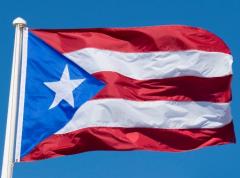 Puerto Rico is a territory of the United States. Puerto Rico was ceded to the U.S. by Spain in 1898, and the Island has belonged to the United States ever since. In 1917, Puerto Ricans became U.S. citizens, and everyone born in Puerto Rico is a citizen of the United States.
Puerto Rico is a territory of the United States. Puerto Rico was ceded to the U.S. by Spain in 1898, and the Island has belonged to the United States ever since. In 1917, Puerto Ricans became U.S. citizens, and everyone born in Puerto Rico is a citizen of the United States.
But Puerto Rico is not a state. It continues to be a territory. Under the U.S. Constitution, Congress has “plenary” – complete – power over Puerto Rico. It is legal for Congress to treat Puerto Rico differently from states, and Puerto Ricans do not share in the same rights and responsibilities as their fellow U.S. citizens.
There are no senators or voting congressional representatives for Puerto Rico. The Island has just one non-voting representative in the legislature. The people of Puerto Rico cannot vote in presidential elections, and they have no electors in the Electoral College.
With so little representation, and no legal requirement that Congress treat Puerto Rico equally, it’s no surprise that Puerto Rico receives less federal attention than the states.
In funds for highways, federal grants and contracts, healthcare funds, and many other areas, Puerto Rico receives much less than any of the 50 states.
Puerto Rico is also not a country. While Puerto Rico fields sports teams in international sporting events and competes in international beauty pageants, the government of Puerto Rico can’t make trade deals with nations or make decisions about its currency, or take any other steps available to countries.
And, while the title of Puerto Rico includes the word “commonwealth” (just like the titles of Massachusetts and Kentucky), that word has no legal meaning in the United States. Puerto Rico is simply a territory belonging to the United States.
In 2017, Puerto Rico once again voted to gain a permanent political status. The Puerto Rico Report will be covering the news throughout this historic process.


